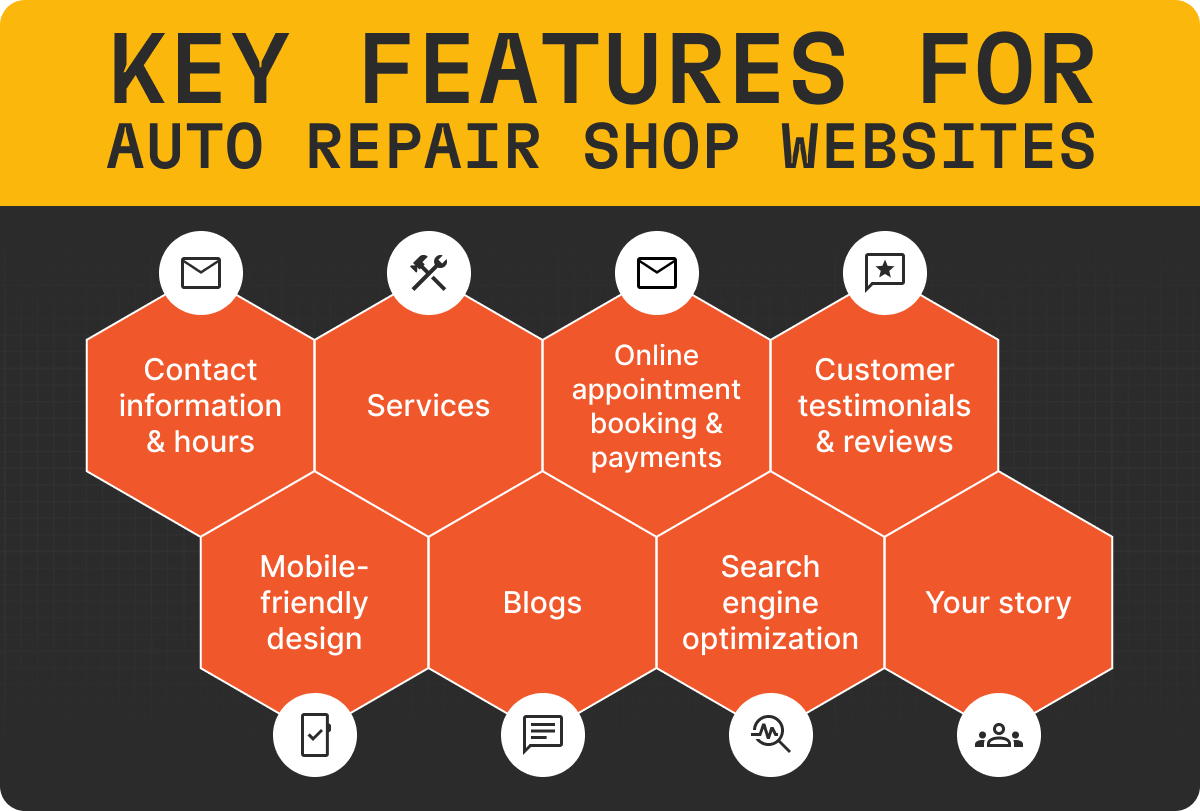When researching digital vehicle inspection software solutions, you should look for these seven core features that benefit your team and your customers:
- A searchable DVI history
- The ability for technicians to attach photos and videos to inspections
- A color-coded system that indicates the severity of inspection findings
- A direct tie-in to parts and labor data when building estimates
- The ability to add canned jobs when building estimates
- Digital authorization
- Automatic saving and tracking of declined jobs
1. Searchable DVI History
When shopping for digital vehicle inspection software, make sure that you can easily look back on past inspection findings. When service advisors are able to quickly find out what was uncovered during previous inspections, they’re less likely to miss a repair opportunity and leave money on the table. They can simply pick up where they left off, helping your shop sell more repair work.
2. The ability for technicians to attach photos and videos to inspections
It’s one thing to tell a customer, “Hey, your car has really bad engine corrosion.” It’s another thing to show the customer a photo of the orange, brittle-looking rust all over their engine. When customers can see what’s really going on with their vehicles, they’re more likely to trust your team’s word and authorize repairs right then and there. They’ll be less inclined to shop around for a second opinion or tell you, “Oh, I’ll sleep on it and come back tomorrow.”
A digital vehicle inspection software that enables technicians to quickly attach photos and videos will help your team keep repairs moving along and build customer trust.
3. A color-coded system that indicates the severity of inspection findings
When explaining repairs to customers, the best route is often the simplest one. Instead of spending time speaking or writing about the intricacies of each inspection finding, service advisors can leverage digital vehicle inspection software that uses a simple, color-coded system to instantly give customers an idea of how urgent each inspection finding is. For instance, an inspection finding marked in green would indicate that everything is good to go, one marked in yellow would indicate something that might need attention down the line, and red would indicate the need for immediate action.
4. A direct tie-in to parts and labor data when building estimates
It’s vital for service advisors to weave in the right parts and labor data when building estimates. But doing so manually is a tedious process. With everything going on, service advisors might accidentally scribble down the wrong piece of information, resulting in the customer getting the wrong parts and labor pricing, or inaccurate parts availability.
Digital vehicle inspection software with a direct tie-in to parts and labor data helps service advisors create accurate estimates from the get-go, so there are no unpleasant surprises for anyone at the shop come estimate-review time.
5. The ability to add canned jobs when building estimates
On a daily basis, service advisors may find themselves writing the same types of findings on estimates over and over.
Digital vehicle inspection software with a canned jobs feature will eliminate a lot of this repetition by enabling service advisors to add pre-saved jobs to estimates in a matter of seconds. That way they can complete inspections faster and get estimates in customers’ hands as soon as possible.
6. Digital authorization
The easier you make it for your customers to authorize repair work, the more likely they’ll quickly do so. That’s where digital vehicle inspection software with digital job authorization steps in. Service advisors won’t have to track down customers to get their verbal or written approval to start repair work. Instead, customers can approve or decline individual jobs from the moment they get their estimate.
7. Automatic saving and tracking of declined jobs
Some repair work is going to get declined for various reasons. But don’t worry. Declined jobs show that your shop is thorough with inspections and estimates; your team caught every budding and existing issue with each vehicle. Think of declined jobs as future business opportunities for your shop.
However, remembering and keeping track of declined jobs can get tricky with a pen and paper method. Service advisors might totally forget about these opportunities, or if they remember, they’ll have to dig through stacks of paper or navigate folder after folder on a computer just to find the right estimate.
Digital vehicle inspection software that has a “declined jobs” feature enables your service advisors to pick up right where they left off the next time a particular customer walks into your shop. They’ll be able to search which jobs the customer declined last time, and recommend taking care of those issues. The results? You’ll get more business and impress your customers with your great customer service.



.png)
.png)




.svg)



.svg)